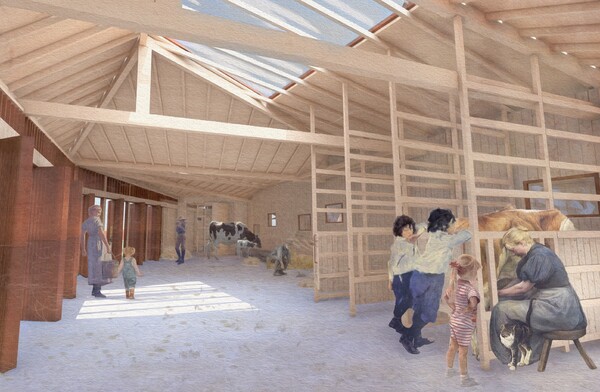Polluted Pastures: An Agriculture & Water Research Centre in Lumbutts, West Yorkshire
As a grade II listed 19th Century Water Tower in Lumbutts, the site’s industrial heritage owes itself to resources such as the adjacent River Calder and subsequent surrounding reservoirs. The former mill on site utilised these resources through the use of the Water Tower, and the site became home to industrial protests and political change to worker’s rights. The mill, unfortunately, left the river in a damaged state, with heavy metals and pollutants in its waters. The mill is not, however, the sole cause of the river’s unhealthy classification, with the largest pollutant being agricultural waste. Dairy farming is largely at fault, with a legislative loophole allowing farmers to pollute the waterways.
The proposal of a micro-dairy, market and water testing facility/learning centre addresses the harmful relationship between industry and water, with a proposed water path connecting the buildings and their processes. The Water Tower itself will be home to the water testing and learning centre, with the water path running through it, along with a ‘waterfall’ feature that will divide the ground floor. These water features not only seek to provide a symbolic connection between industry, architecture and ecology, but will also help researchers collect samples to test. The impact of water is conveyed through the architectural language and materiality of the project, whilst the creation of public commons seeks to re-establish theories by Alexander and Rossi, reclaiming 'pathological' architecture, within the context of a rural hamlet.
Throughout the thesis project, model-making has been integral to our design process. Working in a pair has allowed us to utilise the rapid creation of iterative models to test early design decisions, whilst in S3 we were able to enjoy exploring the design in more detail at a larger-scale.


